Located deep in the heart of the Ashanti Region in southern Ghana, less than 500 miles north of the Equator, is the historical city of Kumasi. Known as both “The Garden City” and the national cultural centre of Ghana, Kumasi is a must for any traveler exploring the country. The top things to do in Kumasi, Ghana not only show off the significance of its culture, but also its unique foods, kumasi attractions, and aspects of daily life.
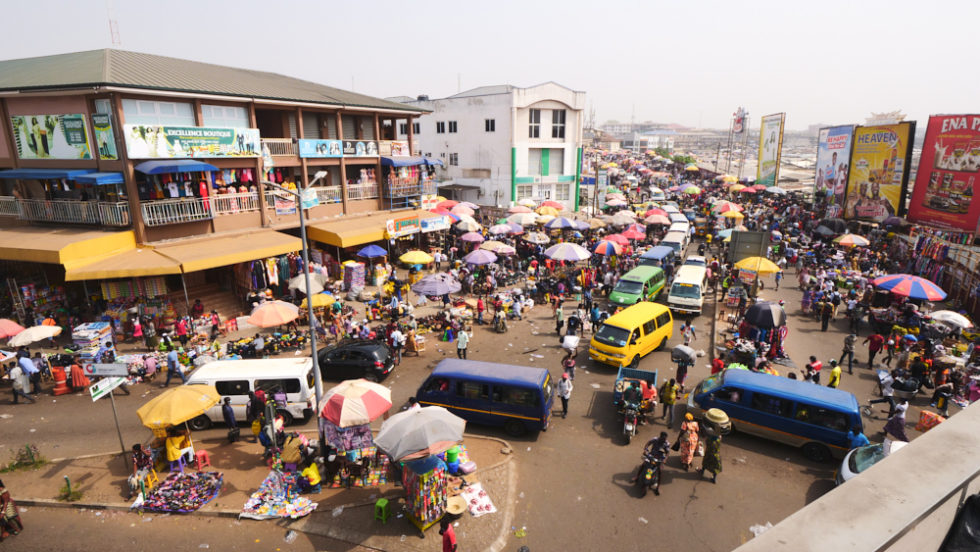
Kumasi’s historical significance dates back to 1695, when it became the capital of the Ashanti Empire. Founded by King Osei Kofi Tutu and his adviser Okomfo Anokye, the kingdom became known for its military prowess, architecture, culture, and wealth, which was largely accumulated though the trade of gold and slaves.

Though it’s arguably the most culturally intriguing city in Ghana, Kumasi tends to be overlooked by most travelers. Travelers who skip Kumasi miss out on its artisans and handicraft vendors, who create extraordinary works of art including masks and carvings.
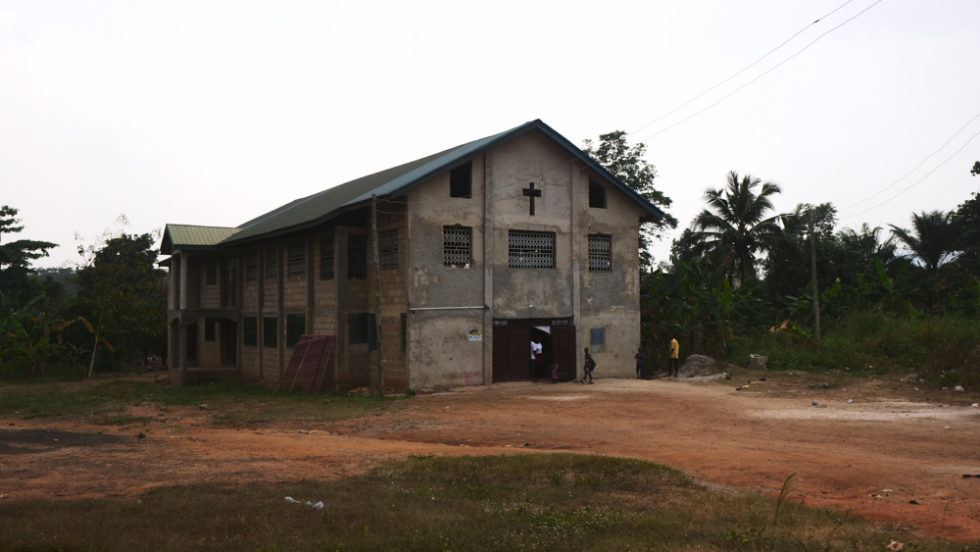
The people of Kumasi have also preserved traditional crafts such as drum making, pottery making, and Kente cloth weaving. Time-honored practices dating back to the Ashanti Kingdom can be found everywhere from the sprawling Kejetia Market to the incredible craft villages north of town.
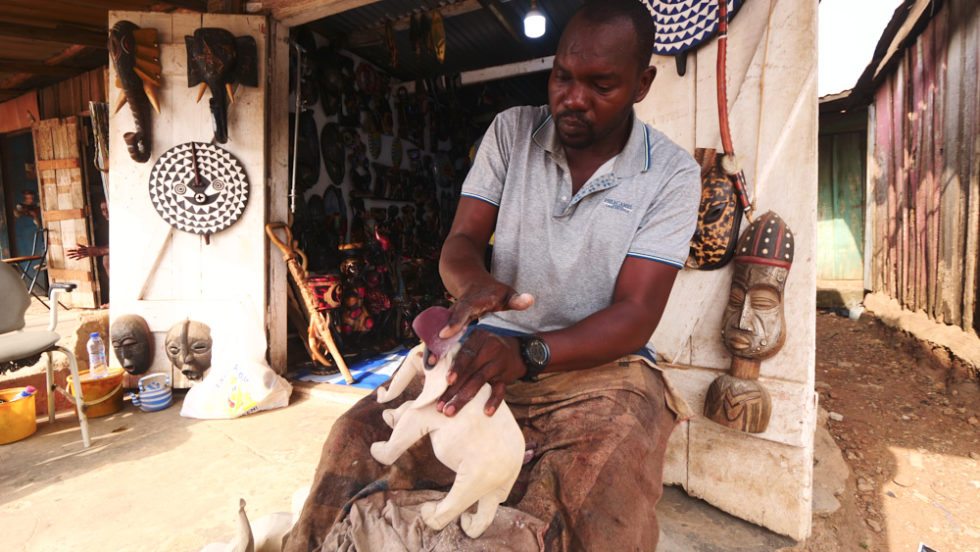
Of all the vibrant locations on my itinerary, Kumasi was the one I looked forward to most. It did not disappoint. Meeting the craft vendors and watching them go about their painstaking work was an absolute honor and pleasure. The city has an enigmatic air to it, and you can feel the pride of its people everywhere you go.
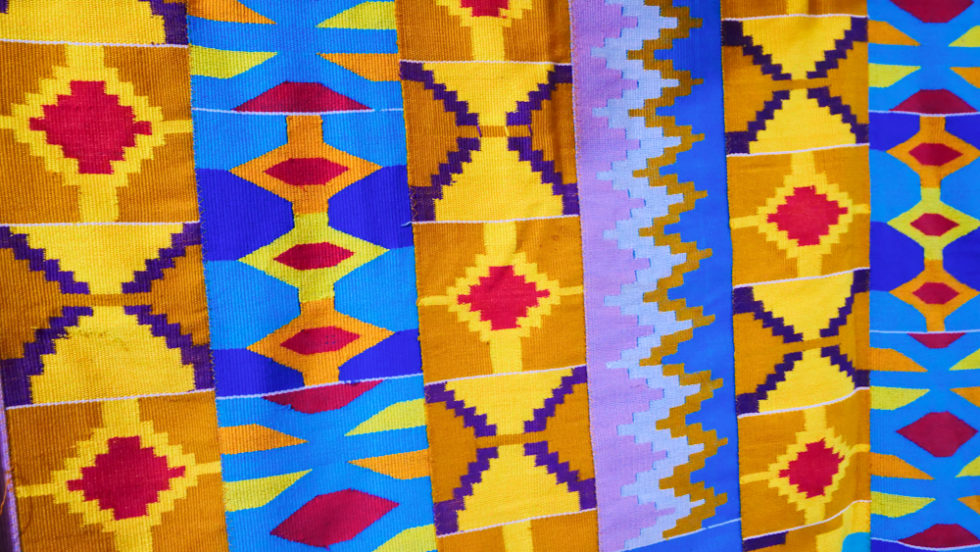
I spent two incredible days experiencing Kumasi with my guide Isaac and driver Ben from Jolinaiko Eco Tours, which also provide custom tours adventure. I spent every moment of it soaking up as much of the local culture as I could. But, as any frequent traveler will tell you, sometimes things don’t go as planned. In the wee hours of my second morning in town, I came down with a sudden stomach bug that left me feeling tired and dehydrated for much of the day.
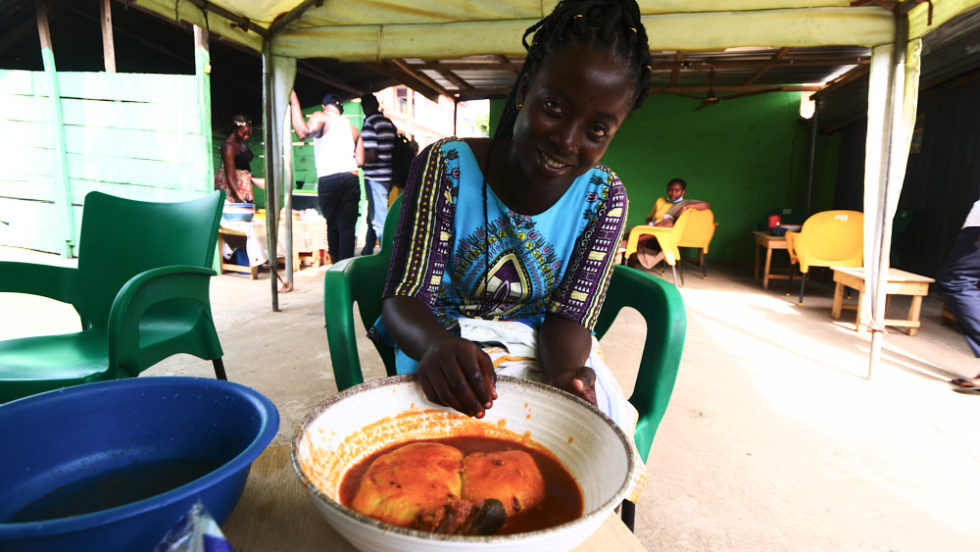
Occasional illnesses are commonplace for world travelers, so I pushed though so I wouldn’t lose half my time in the city. Kumasi’s oppressive tropical heat and humidity would be tough to navigate while healthy, and it certainly sapped me of much of my energy throughout the day.
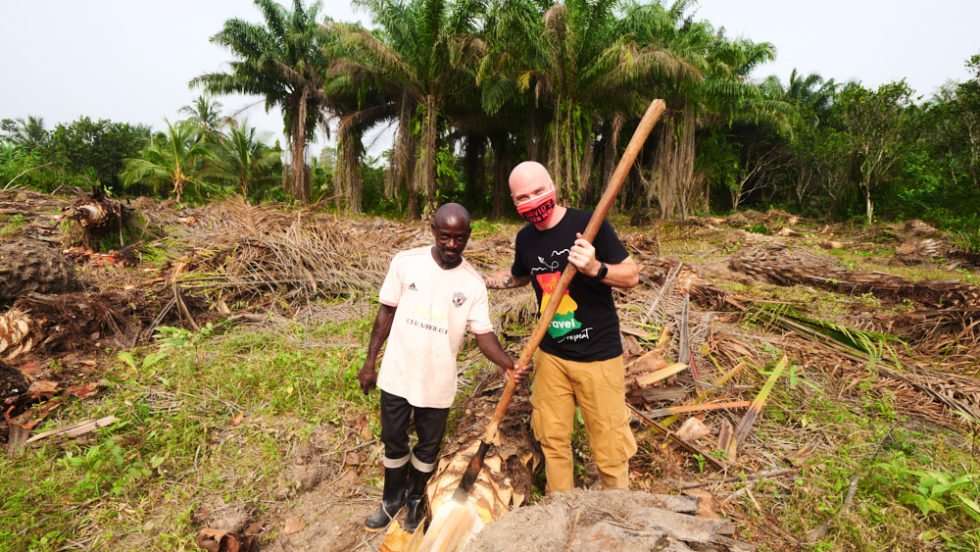
But even an ill-timed sickness couldn’t mar my time in Kumasi. It was everything I had hoped it would be and so much more, and was the highlight of my time in Ghana. The people, in general, were quite warm and friendly. I loved diving into the culture and food there, and I’m sure you will, too. These are the top 10 things to see and do in Kumasi, Ghana!
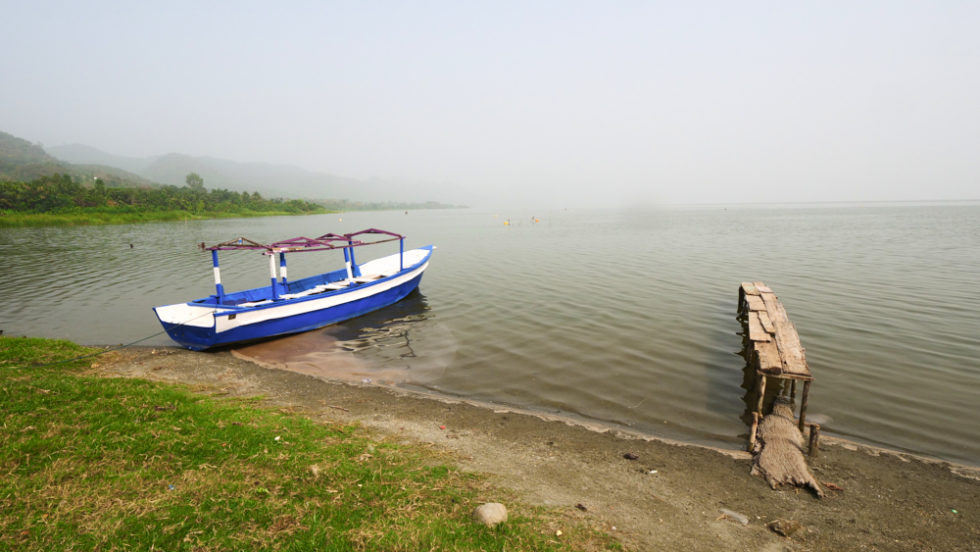
Roughly 19 miles southeast of Kumasi is one of the most unique locations in all of Ghana, Lake Bosomtwe. The country’s only natural lake, Lake Bosomtwe is located in an ancient, 6.5-mile-wide meteorite crater south of the city. Around the lake are roughly 30 small, relaxing villages, including Abono on the lake’s northern shore.
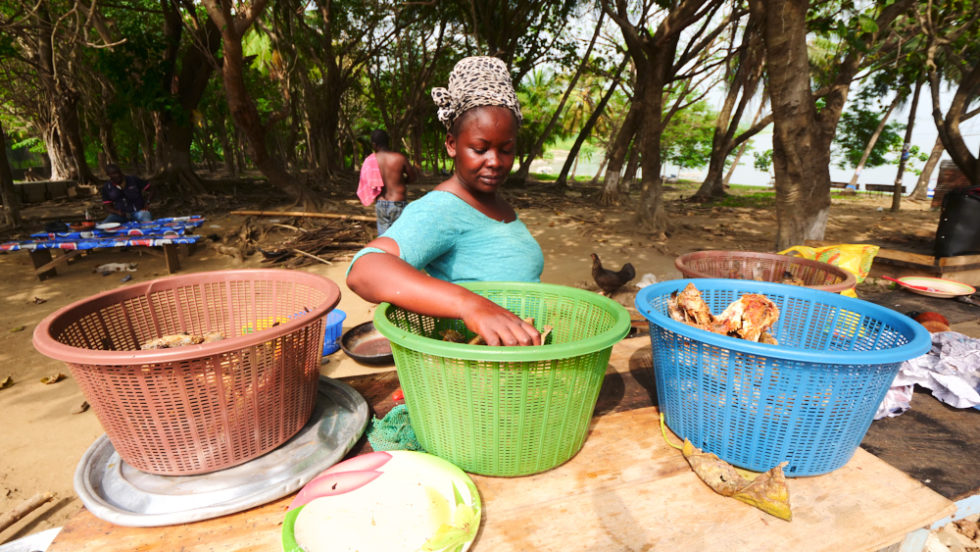
It costs 10 Cedis, or roughly $1.66 USD, to enter the lake area. The area is accessible by a rough and winding road that’s full of potholes. Once you arrive in Abono, you can enjoy a delicious meal of local dishes. I recommend the fried tilapia, Fanti kenkey, and a spicy shito prepared by a woman near the lakeshore.
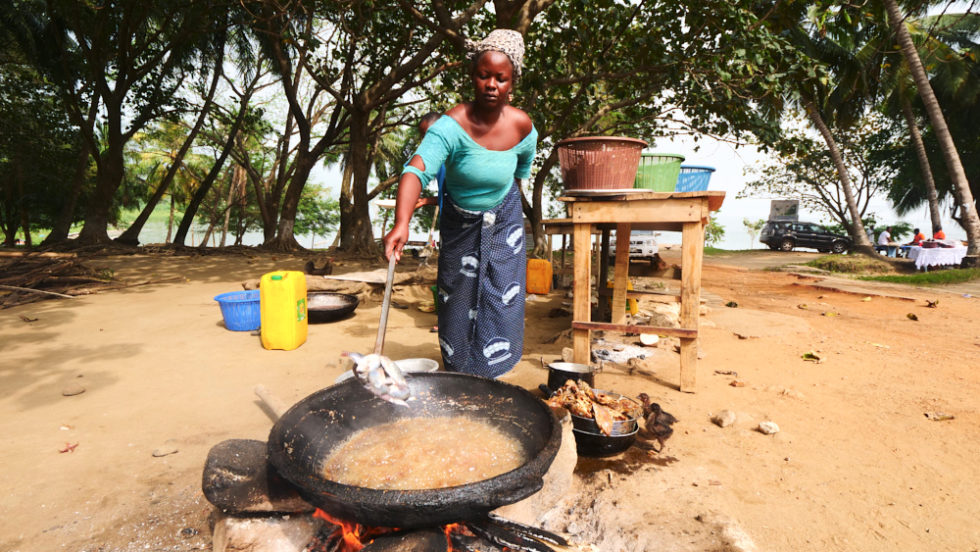
Kenkey is a high-carb dish made from corn flour dough, which is often paired with a protein and shito, a spicy and rustic sauce made from peppers, tomatoes, and onions. Fanti kenkey is a variation of kenkey made by the Fanti (or Fante) people of Ghana.

The Fanti kenkey was packed with flavor, and the kick of heat from the shito really made the crispy fish pop. If you’re worried about eating tilapia for health reasons, it’s worth noting that this is wild tilapia, not the farm-raised kind you typically get in America. Just be careful of the bones!
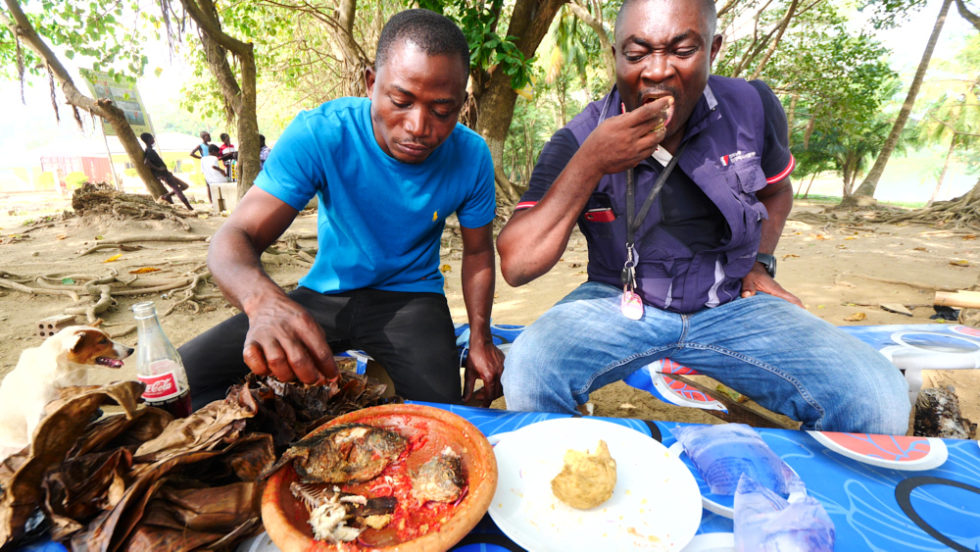
If you wish, you can enjoy your meal with some local liquor or a Club Beer from the nearby shop. Afterward, you may want to head out on a boat tour of the lake for 200 Cedi/roughly $33 USD.

Visibility was poor on the day I visited, so I skipped the boat tour, but relaxing by the lakeshore with great food and people was more than worth it. On clear days, it’s among the top things to do in Kumasi, Ghana!

I’ve been to many markets in dozens of countries around the world, but none have been as massive, immersive, fascinating, or as overwhelming as Kumasi’s Kejetia Market and kumasi city mall. This labyrinth of interconnected lanes and alleyways in the heart of the city is made up of over 12,000 stalls! It’s a wild place to explore and easily one of my favorite things to see and do in Kumasi, Ghana.
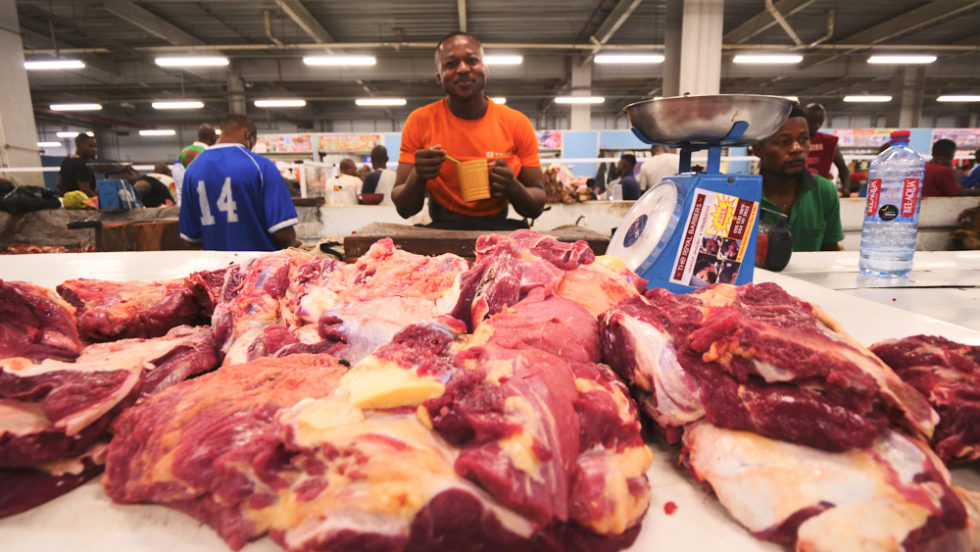
It’s an enthralling and captivating place, as the activity never stops. From locals stocking up on their goods to vendors butchering chickens to others preparing food and selling clothing and fabric, it’s a bit chaotic but exactly what I love when I travel. Over the commotion, don’t be surprised if you also hear musicians and singers performing!

In the modern, indoor part of the market, are butchers hacking apart the carcasses of various animals, including cows and goats. The indoor section has two levels, and on the second level are everything from Kente cloth vendors to tailors!
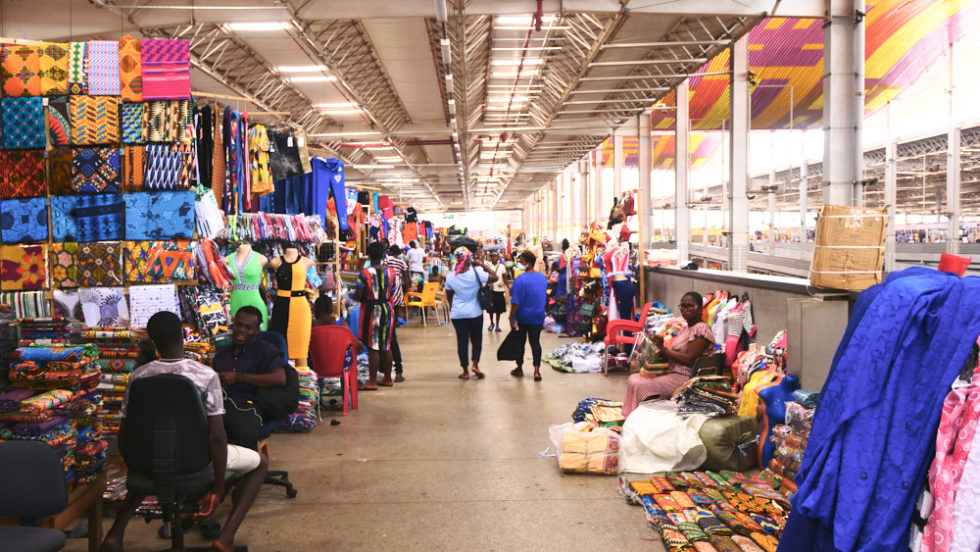
Outside, in the main market, you’ll find lots of secondhand stalls selling clothing and accessories, including shoes, jewelry, and bags. I found the vendors to be very kind and friendly, and chatting with them as I explored with my guide Peter was a pleasure!
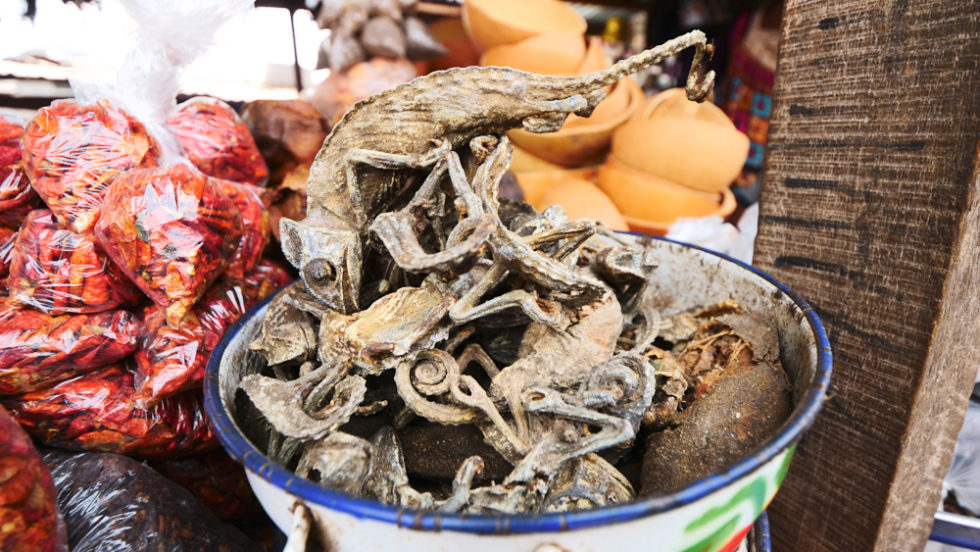
One of the more unique sights in the market are the vendors selling items used in charm-making, protection, and traditional medicine. Don’t be surprised if you see bizarre-looking herbs and even dried chameleons on their tables! While exploring Kejetia Market, consider visiting the nearby Prempeh II Jubilee Museum as well.
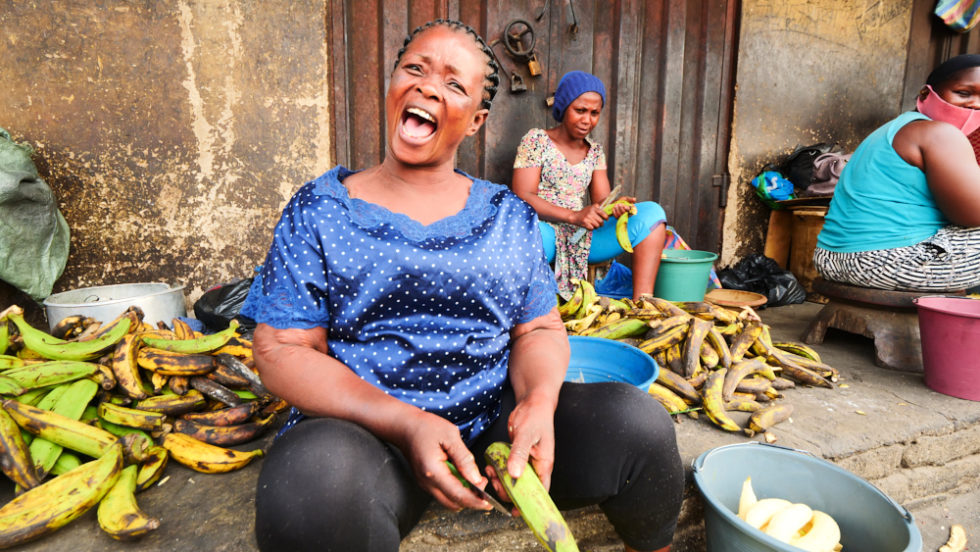
If you get hungry, you can find food vendors throughout the market. My favorite dish I tried at the market was etor, a made by a group of women in the outdoor section. Etor is a popular dish made from boiled and mashed plantains, fish, onions, peanuts, shito, and avocado.

It’s a wonderfully balanced dish with lots of contrasting textures that work really well together. The starchiness of the plantains, combined with the spicy shito, smooth avocado, and crunchy peanuts, made it both satisfying and incredibly unique!
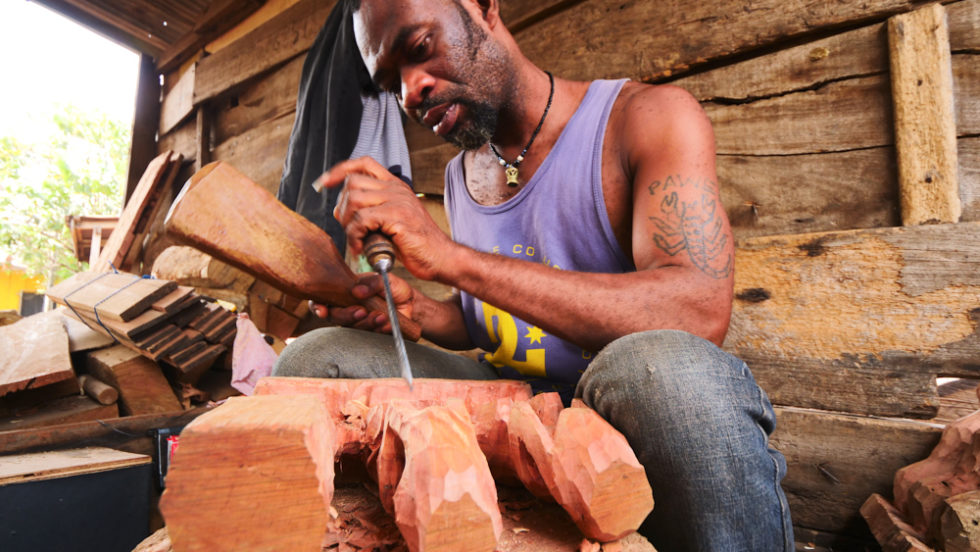
On my second day in Kumasi, Isaac and I drove to Ahwiaa, a craft village 18 miles north of town. It takes about an hour to get there, but it’s worth the day trip. Ahwiaa is extremely famous for its wood crafting and handmade souvenirs.
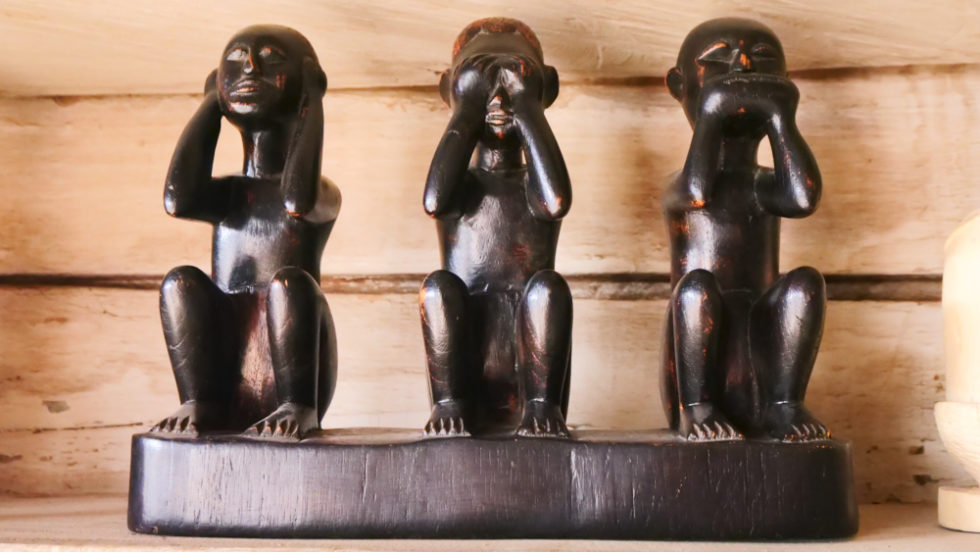
The woodworking traditions in Ahwiaa are apparent as soon as you arrive in town. The very first shop I entered had a beautiful Three Wise Men carving on display. They also sold stools, fertility dolls, masks, and animal figurines made from teak and metal.
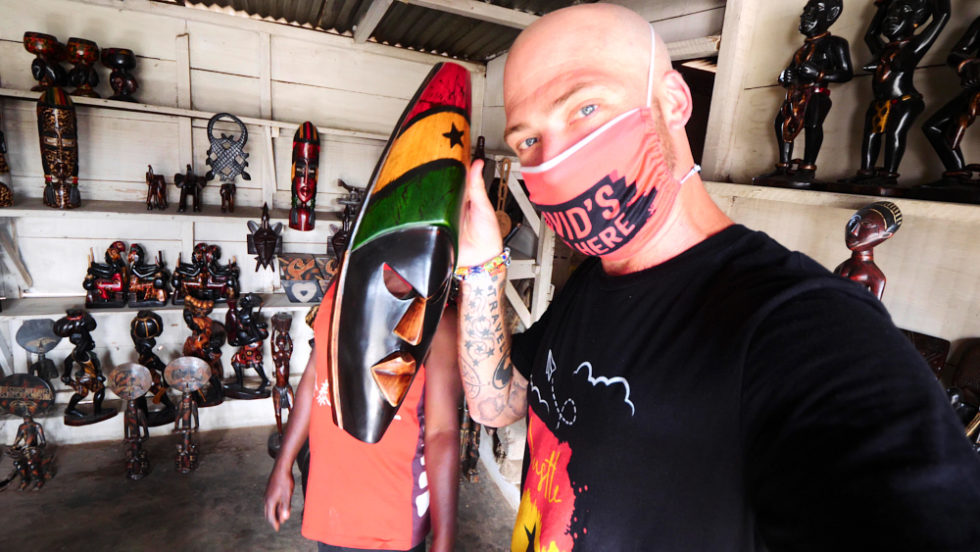
These shops are a gold mine if you’re looking for special, handmade gifts for the people in your life. Each shop’s goods are more dazzling than the last. From expertly painted masks to gorgeous representations of elephants, gazelles, and giraffes, everything is stunning.
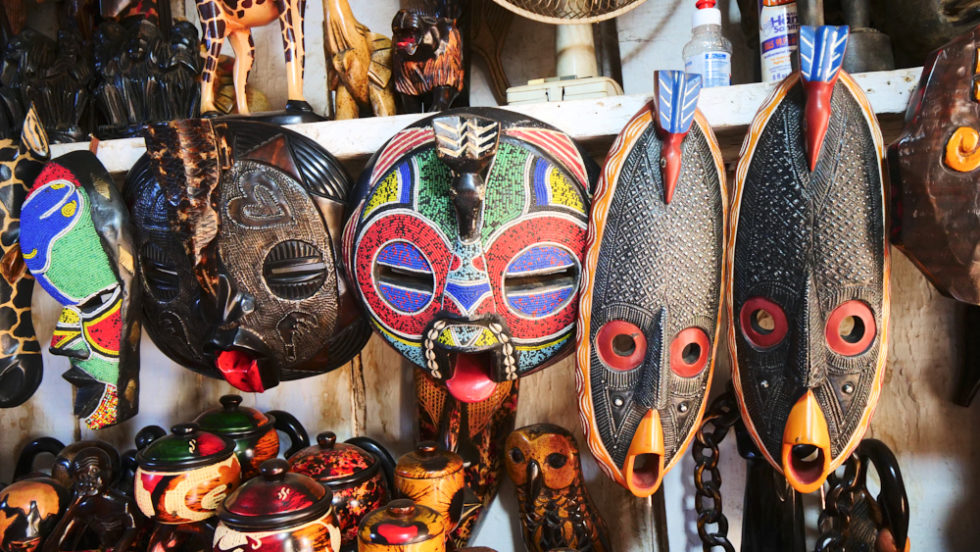
The artisans in Ahwiaa put a ton of work into their craft, and I got to see it first-hand. I spent a while just watching them carve everything from stools to board games to elaborate walking sticks. Others showed me how they cut and design metal plating that’s then applied to the masks.
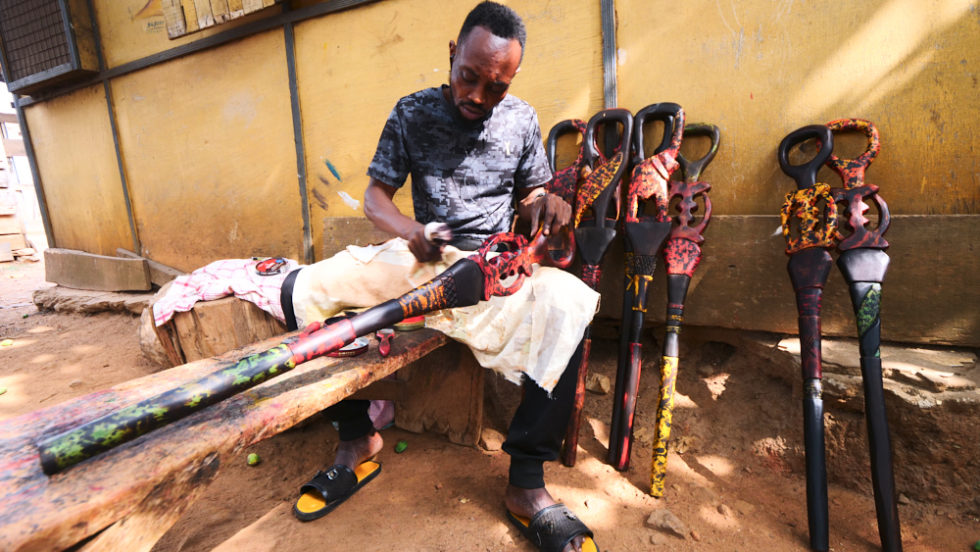
I’m a big proponent of supporting local artisans when I travel, so remember to buy some things. My visit in January of 2021 came during the COVID-19 pandemic, and the businesses had clearly suffered due to lack of tourism. Always support the locals!
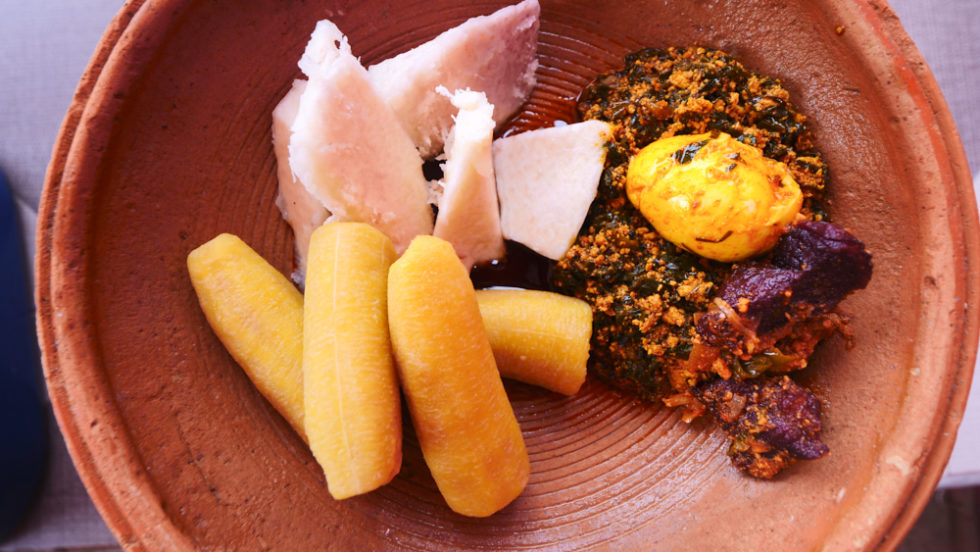
Although I’d been sick earlier that morning, I couldn’t resist trying some of the local street food. I came across some vendors selling a plant-based dish called egusi. that consisted of beef, boiled plantains, yams, and an interesting mix of seeds, greens, herbs, and palm oil.

The dense, cassava-like yams and boiled plantains had fairly neutral flavors. They balanced out the explosive taste of the greens, egg, herbs, and beef. The salty beef was really nice, and I thoroughly enjoyed the spices in the greens and egg mixture.

Best of all, the dish wasn’t spicy at all, which made it a great option for my stomach. You eat this dish with your hands, so just remember to wash your hands well before you dig in. Overall, I spent only 25 Cedi/roughly $5 USD for Isaac and I to eat. I also gave the vendor an extra $5 for letting me film. Eating the street food and checking out the shops and vendors in Ahwiaa is easily one of the best things you can do in Kumasi, Ghana, so don’t miss out on it!
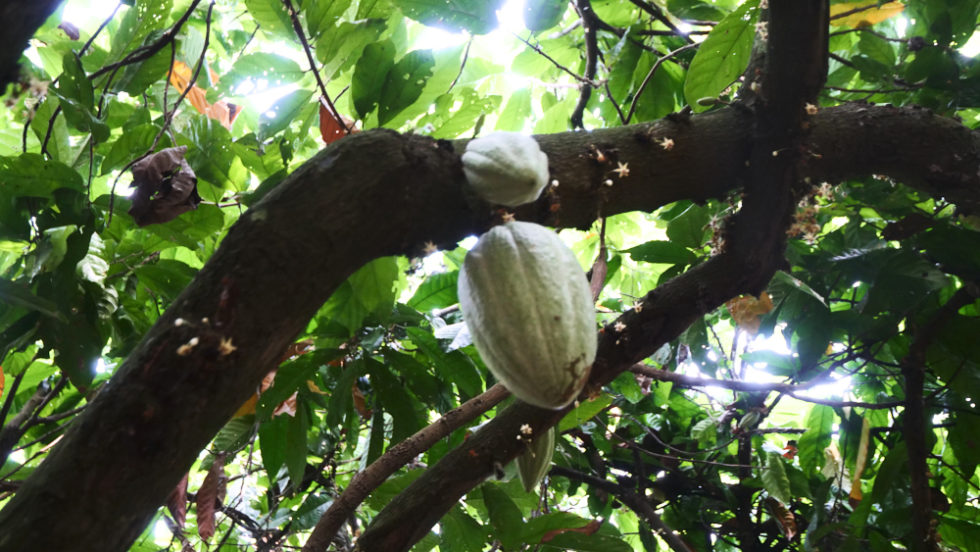
Between the Lake Bosomtwe area and Kumasi are several farms cultivating cash crops like plantains and cacao. Along the road is a hidden cacao farm that you pretty much have to know is there in order to find it. Luckily, my guide Isaac and driver Ben are familiar with the area and found it with no problem.
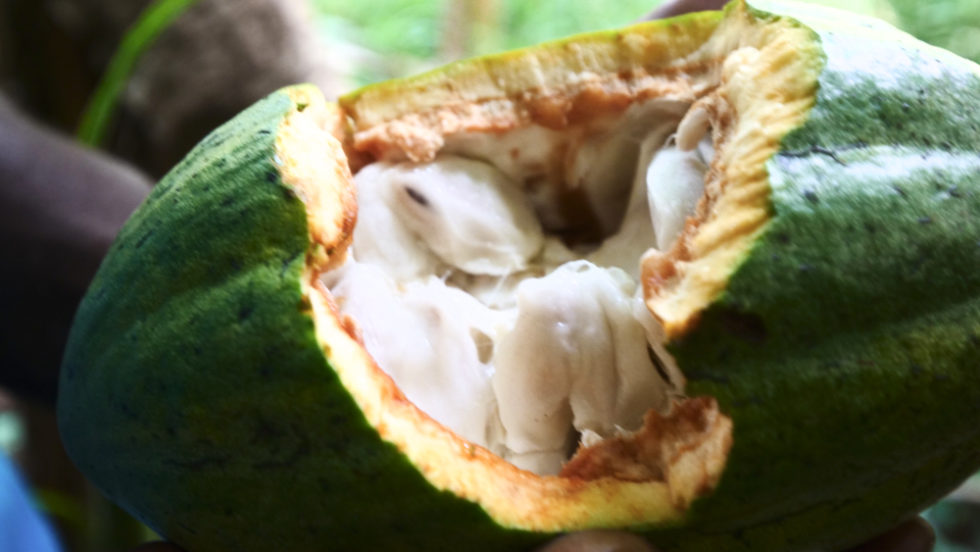
Located down an overgrown trail that runs through the forest, the farm consists of a grove of cacao trees. At the time of my visit, there were lots of cacao fruits rotting on the ground, but the trees were also full of them as well. Pick a fresh one, break it open, and try the seeds inside. They have a bit of a slimy consistency but are very tasty!
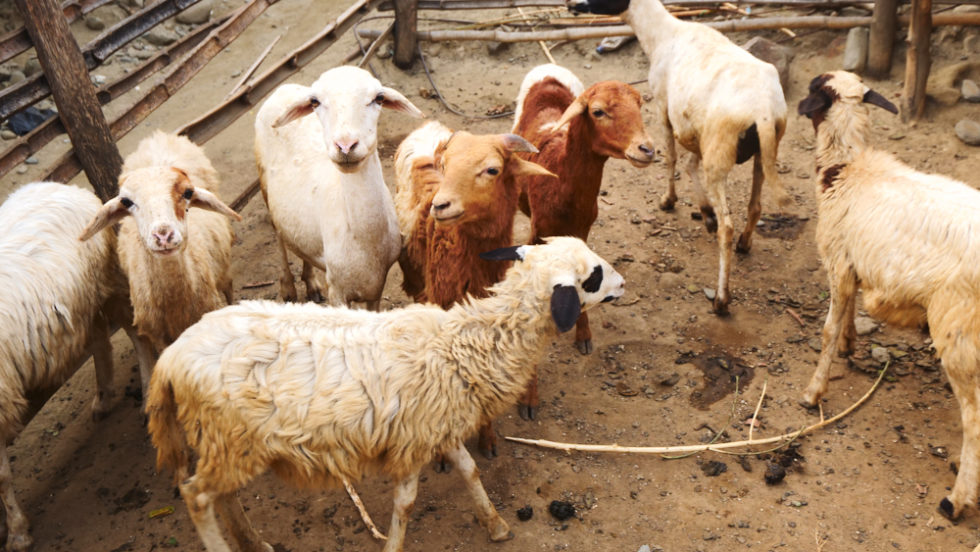
Further on, closer to the city, is a small mud village. There, you can meet the locals, watch them dry cacao beans, and see how they make fufu, a tasty, starchy dish that’s among the staples in the local cuisine.
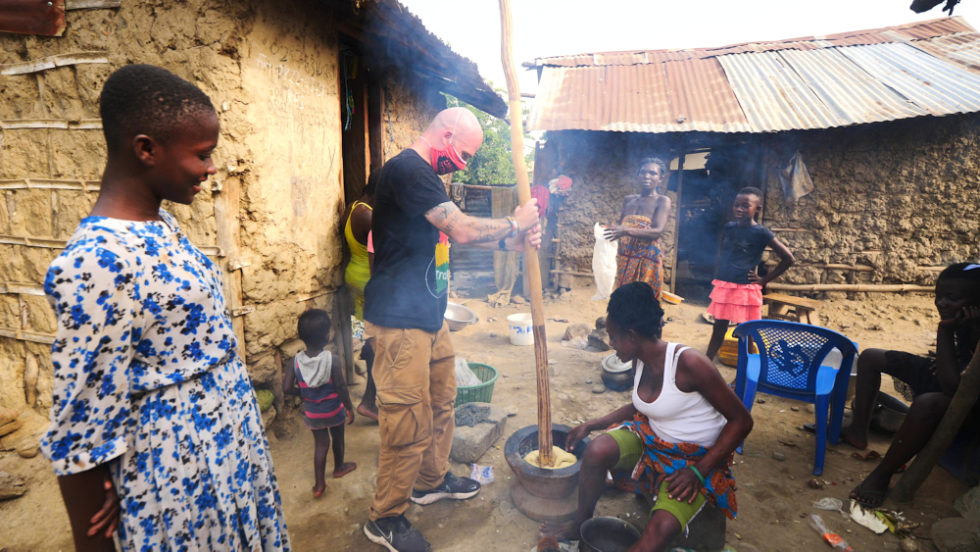
The locals let me try my hand at pounding fufu using a long, wooden stick. It’s a lot harder than it looks and takes real upper body strength to do it for long periods of time like they do!

I also got to try some of their drying cacao beans, which had a fermented aroma and a bitter flavor I wasn’t expecting!
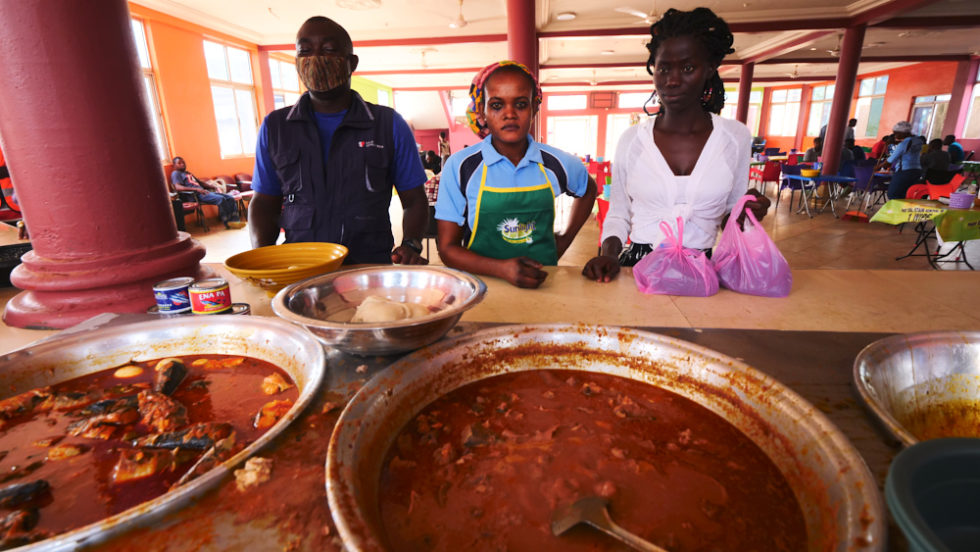
One of the pleasures of traveling the world is getting to try the unique foods that different people eat. When you travel, you’ll find a number of foods that will seem foreign to Western palates. I highly recommend trying them. Eating local dishes, with locals, when you travel, is one of the most immersive experiences you can have!
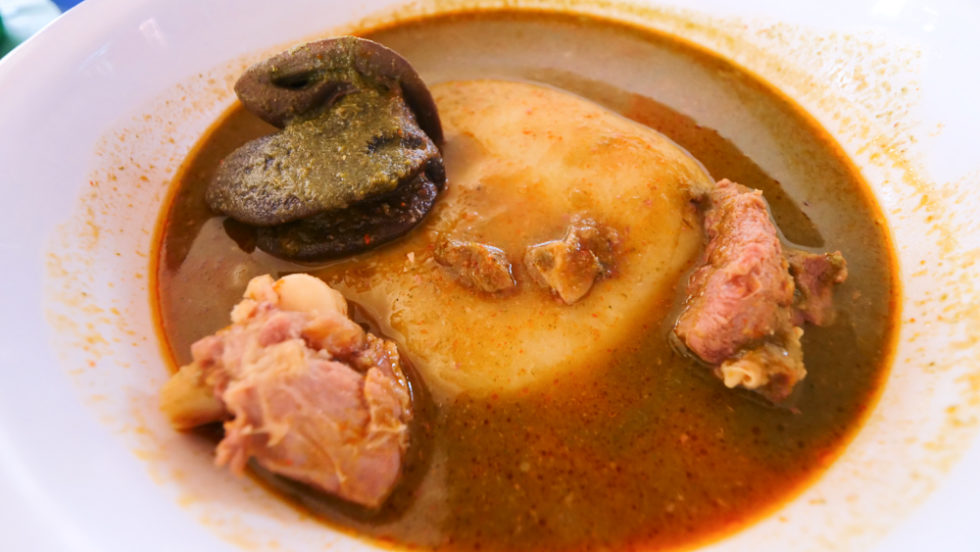
Ghana is full of restaurants called “chop bars,” which are basically “places to eat.” They’re great places to fill your belly and people watch! I recommend heading to Ceci’s Chop Bar, which sells a mix of local favorites. You can try kenkey, fufu, banku, cassava, tilapia, chicken, fish stew, okra stew, giant African snails, and more.
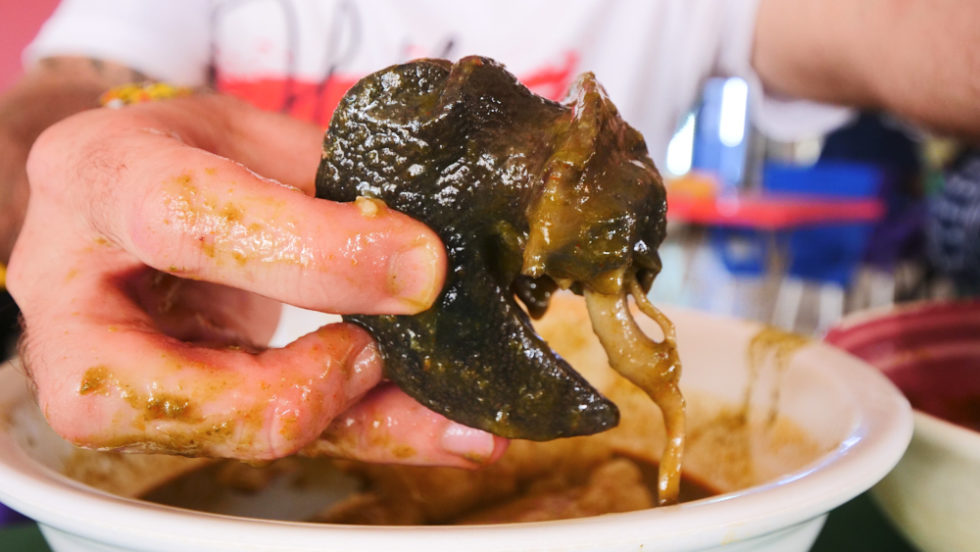
I decided to go with some fufu with goat meat, a peanut-vegetable soup, and for a more adventurous kick, giant African snails. The flavors in the dish were outstanding. The nuttiness, earthiness, and slight spiciness of the soup paired nicely with the pasty fufu and the tender goat.
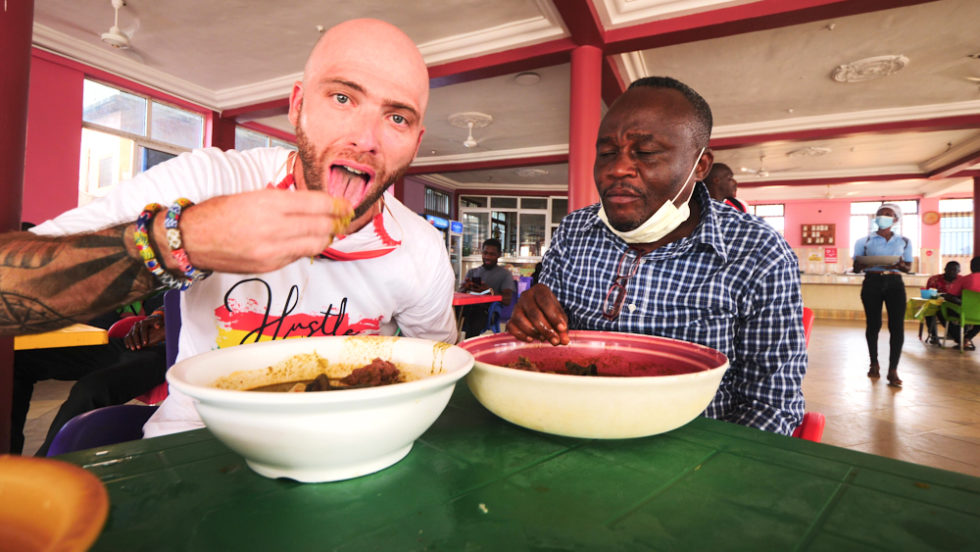
There’s a reason why they call them “giant” African snails. They’re downright monstrous! They’re also extremely tender and meaty, and have a gamy flavor that worked well with the soup and fufu. You eat it with your hands, so clean them beforehand. Don’t forget to drink the soup afterward! It’s one of my favorite things you can do in Kumasi, Ghana!
Ceci’s Chop Bar
M8QQ+HF7
Kumasi, Ghana

If you want to kick back and relax with some food and drinks, there are few better places than Wasaga Pub. Located on Bantama High Street, this cozy spot is a great place to enjoy unique bitters and local beer while catching a football game with the locals.
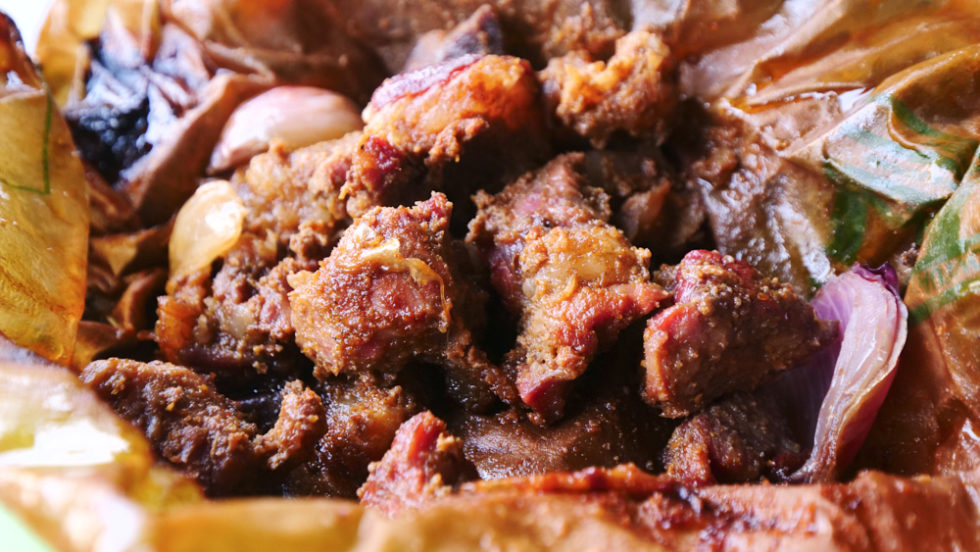
I had bought some grilled sheep kebabs from a vendor earlier in the afternoon, so I enjoyed them at the bar with beer. I decided on a Guinness Foreign Extra Stout, a chocolatey and malty beer brewed in the country.

After a long day of exploring the city, it felt good to just kick back with some fatty and peppery sheep kebabs and a cold beer. It’s a must when you visit Kumasi!
Wasaga Pub
219 Bantama High St
Kumasi, Ghana
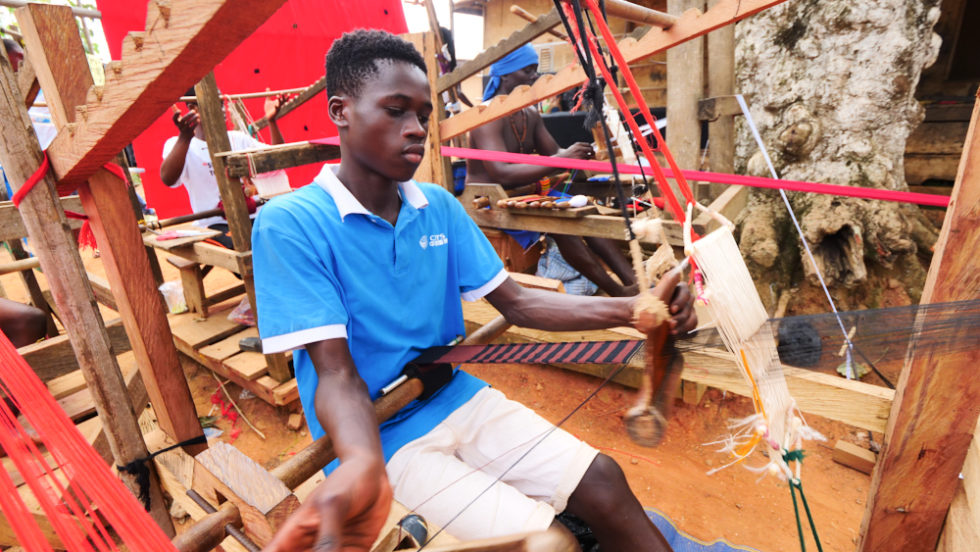
Roughly an hour northeast of Kumasi is another must-visit craft village named Ntonso. It’s home to people who specialize in weaving, a tradition they’ve had for hundreds of years. A local legend claims that the villages ancient inhabitants admired the Akan mythological character Anansi the spider, and sought to weave as well as he did. They’ve been weaving ever since!
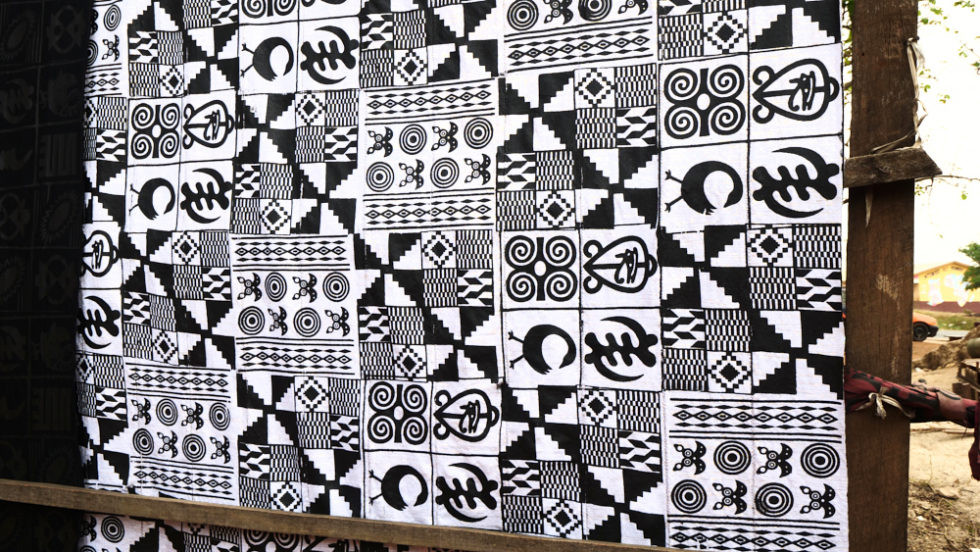
The Akan were the inventors of Kente cloth, a vibrant and colorful textile that dates back to the 11th century and was associated with Ashanti royalty. The cloth comes in many different colors and patterns. In Ntonso, they use calabash stamps to decorate the cloth with Adinkwa symbols, each of which has a different meaning. There are over 60 in total!
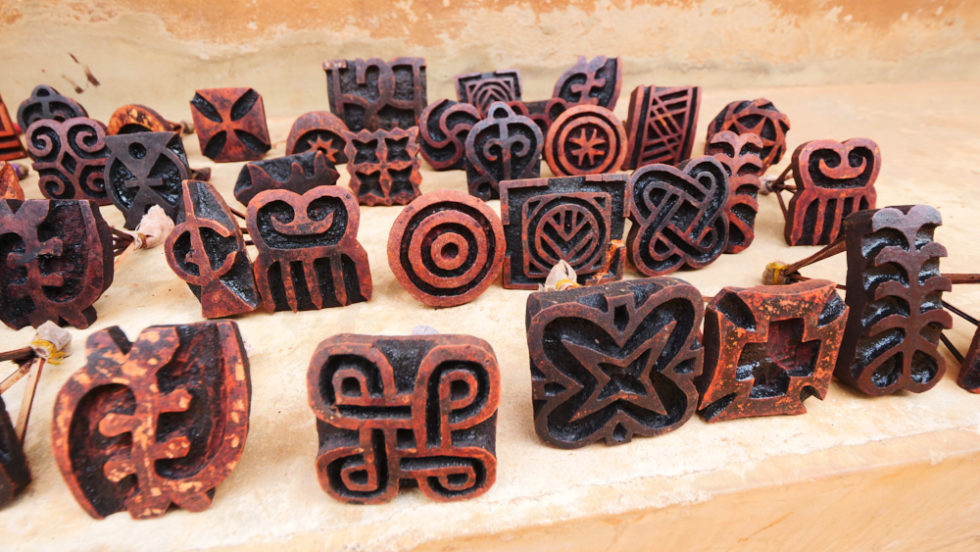
Their designs are quite stunning, and you can even buy pre-made cloth. If you prefer, you can buy custom-made cloths made with stamps of your choosing. I bought two for my daughters, which made for unique souvenirs you can’t get anywhere else!
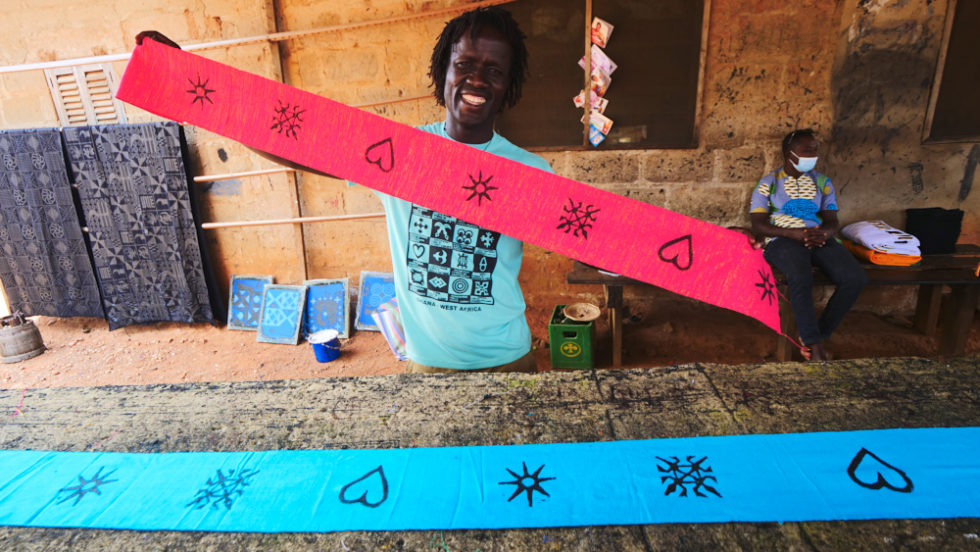
The village of Ntonso is a must for anyone looking to dive a little deeper into the Kumasi area and its people. It was a highlight of my stay in the city and one of the things you have to do in Kumasi, Ghana!
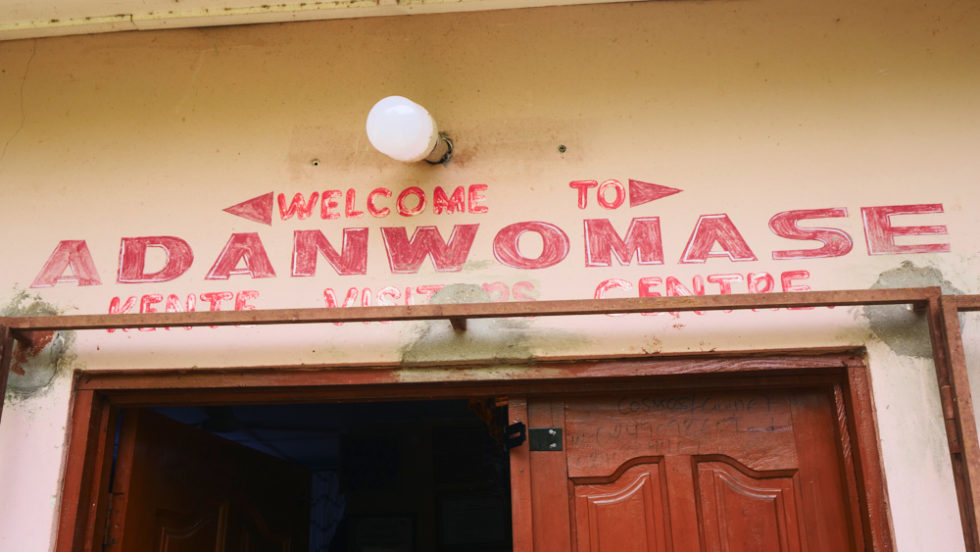
Not far from Ntonso, roughly 55 minutes northeast of Kumasi, is the village of Adanwomase, which also specializes in Kente cloth making. During my visit, a friendly man named Kochu took me on a tour of the center and showed me how they pound tree bark into a soft dust and boil it to make dyes.
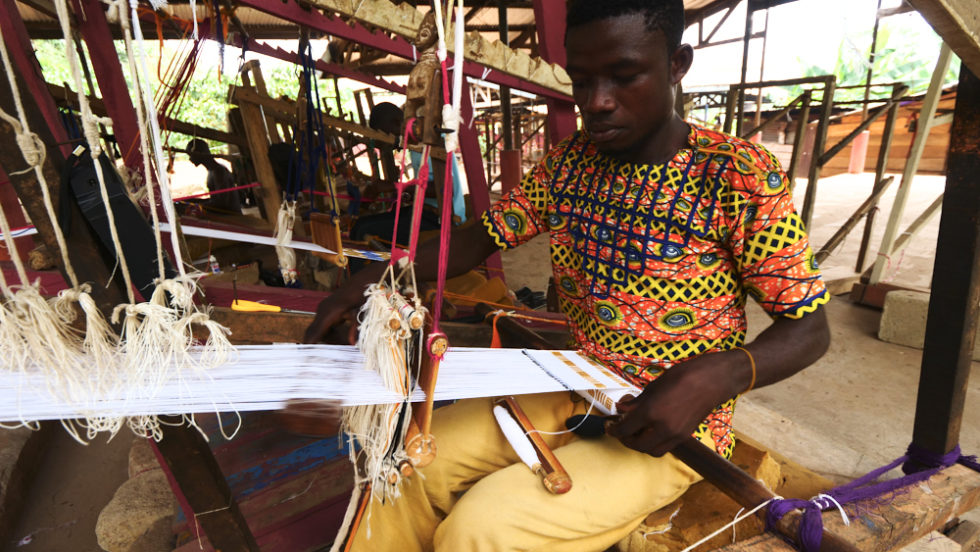
I also got to see how the 70 weavers in the village—all men—weave the Kente cloth. They work incredibly fast, and some of them do very complex designs using double- and triple-weaving methods.
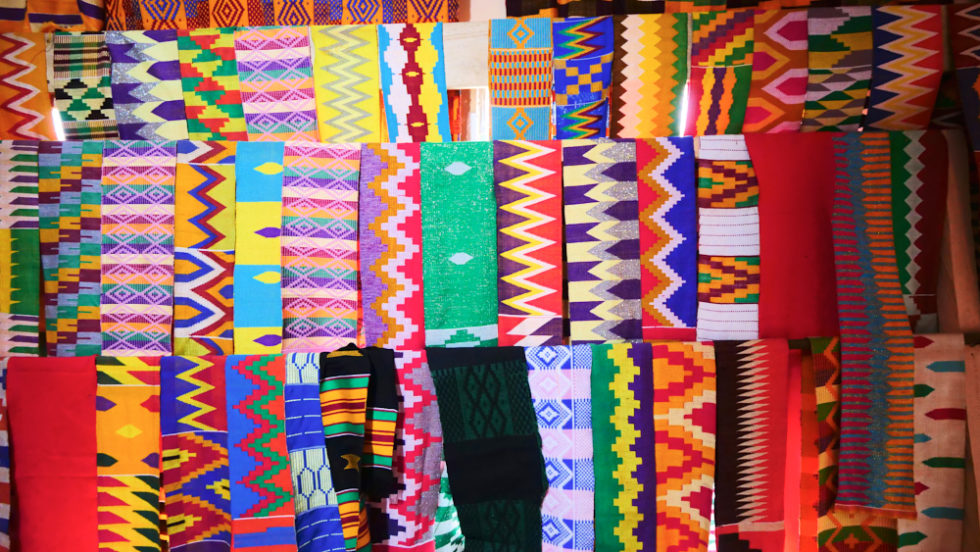
In their shop, you can buy some Kente cloth for yourself! They come in a variety of colors and sizes, so it’s easy to find something within your budget. They have massive, blanket-like cloths that cost over $300 USD and small pieces for just $10, so there’s a nice mix. They’re all beautiful!
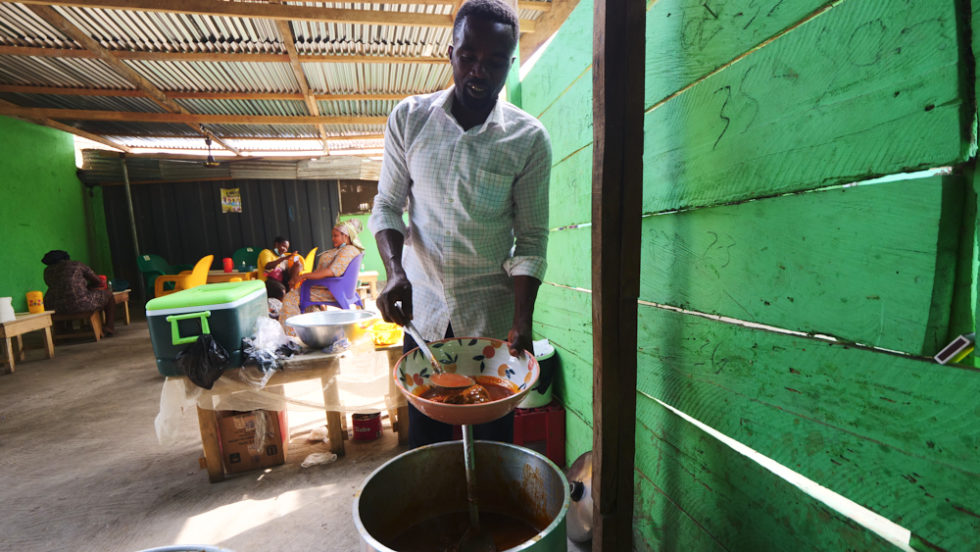
Of course, while you’re in Adanwomase, you would be remiss if you didn’t try some street food. My guide Isaac and I stopped inside a local shop for a bit of palm gin and a dish called kokonte. Kokonte is a pounded cassava flour dish that’s eaten throughout Ghana, Togo, and other West African countries. It’s a common dish that was sometimes known as “Face the Wall” because it was considered a low-class food that many felt shame in eating.
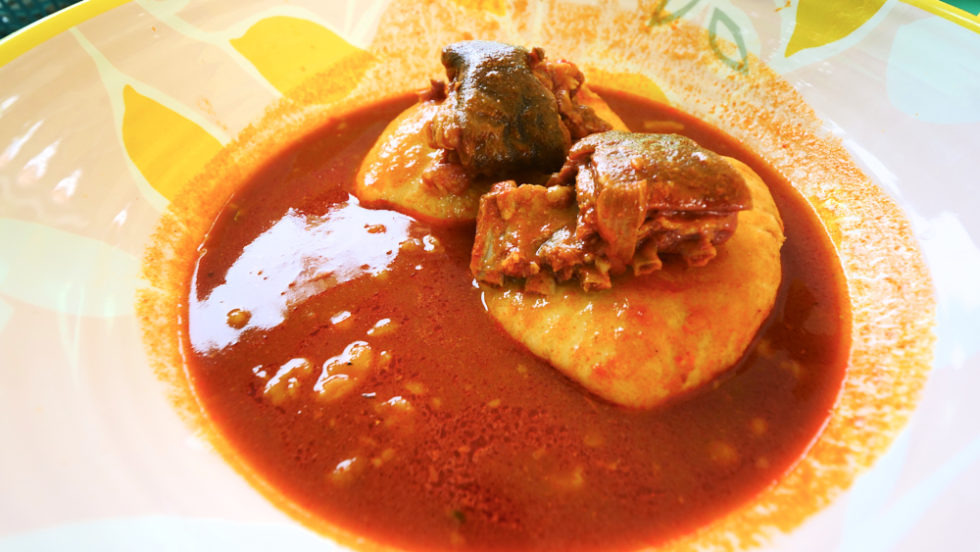
I enjoyed the kokonte with some fatty goat meat and a reddish-brown stew. The pasty, starchy kokonte had a flavor and consistency almost identical to fufu. As with fufu, it paired well with the flavorful goat and stew, which was full of spices but wasn’t spicy.

I learned that the stew was made using palm nut oil, which gave the stew its reddish color. But the stew’s color can also vary based on which ethnic group makes it. I enjoyed it a lot and honestly couldn’t get enough of it! I loved digging into it with my hands and going to town on it!
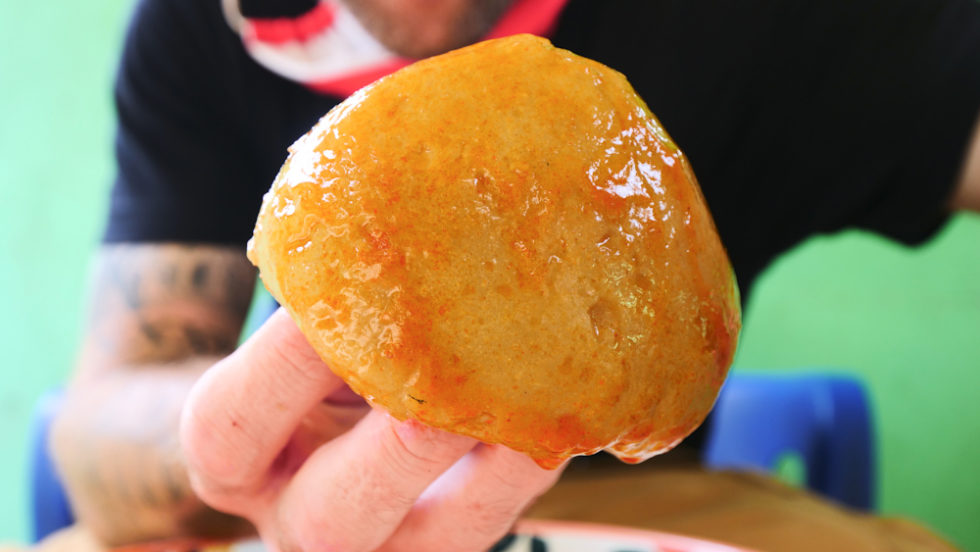
When you’re in the area, be sure to head to the village of Adanwomase. Buying from the locals helps to support their economy and is one of the best things to do in Kumasi, Ghana!
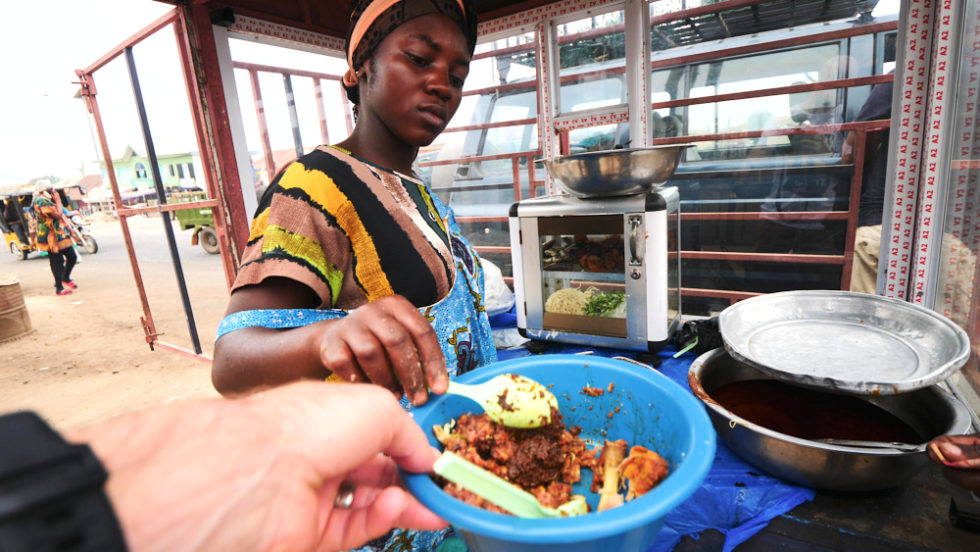
Approximately 41 miles (roughly a two-hour drive) north from Kumasi will take you to the small town of Abofour. If you’re driving from Kumasi to Mole National Park in the north, you’ll pass right through this village, which is the perfect place to enjoy an early-morning street food breakfast!
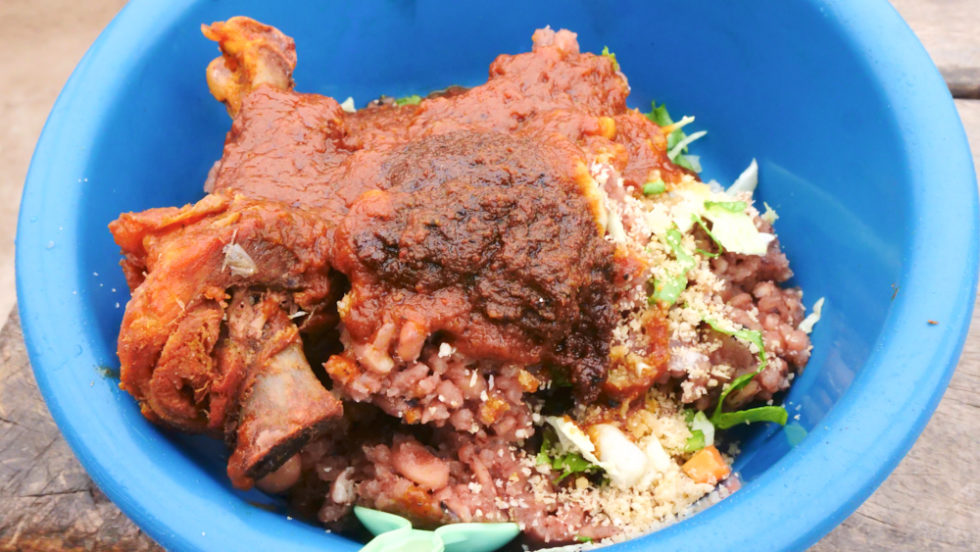
In town, my guide Isaac and I found a woman in a stall by the side of the road selling my favorite Ghanaian dish, waakye! Waakye is a bean and rice dish that comes with a number of items on the side. This version contained spring onions, lettuce, fried chicken, and a dark black pepper sauce.
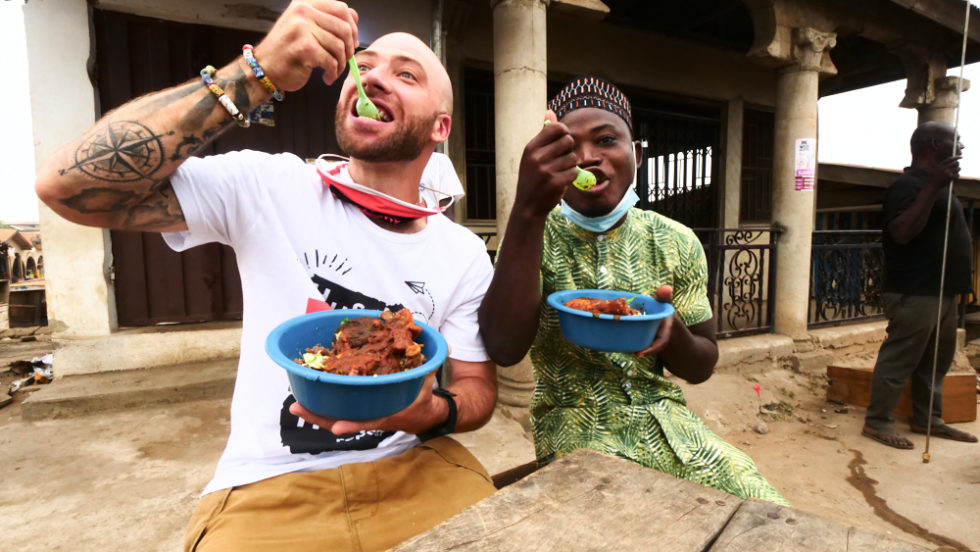
To say this waakye was phenomenal doesn’t do it justice. Between the crispy and juicy fried chicken, the mouthwatering pepper sauce, and the hearty beans, I was in heaven. The dish reminded me of arroz con frijoles and other dishes I’d eaten throughout Central America.
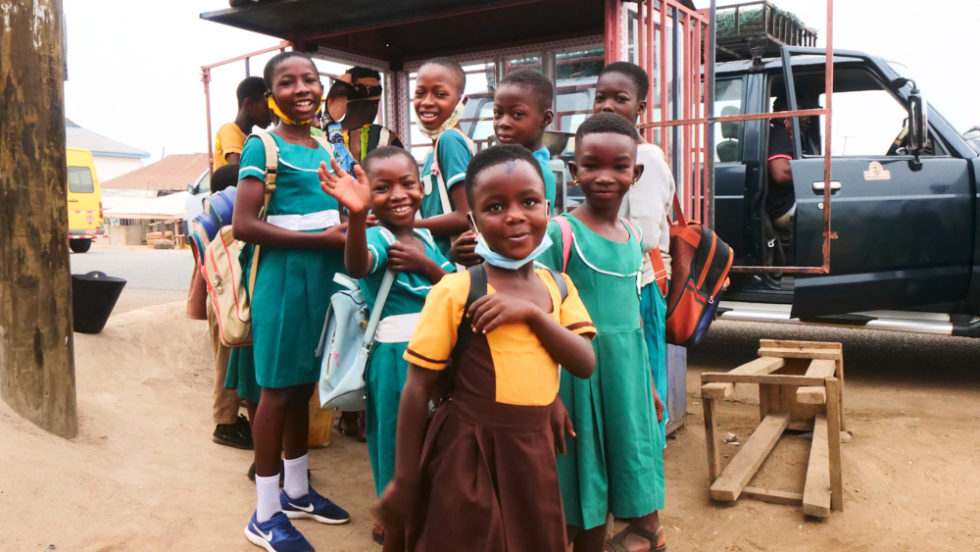
A bowl for me and another for Isaac only set me back $2 USD. Having waakye is easily among my favorite things to do in Kumasi, and in Ghana in general. Everyone makes it a bit differently, but it’s always good!
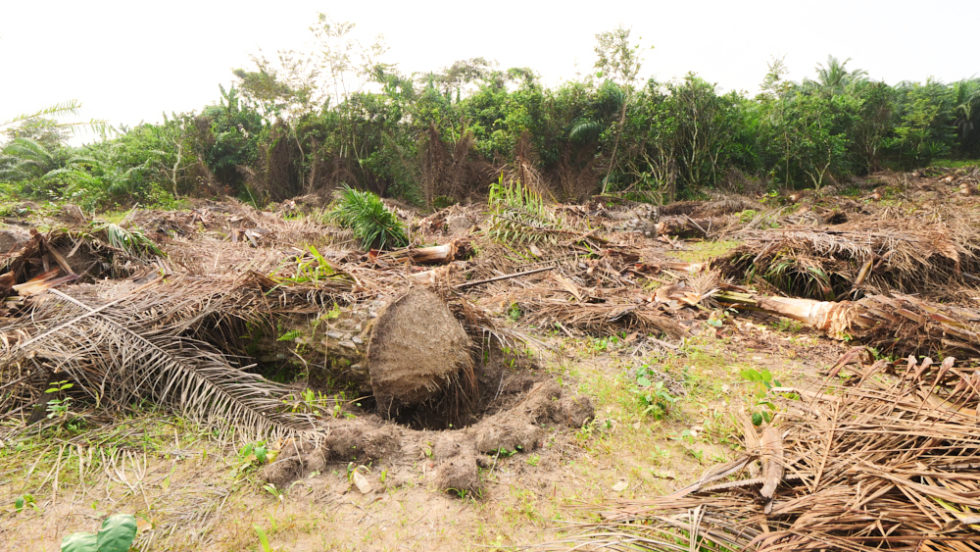
If you’re heading to Kumasi from Elmina/Cape Coast, you’ll pass by lots of small villages and farming communities. At one point, you’ll find a path cut into the bush that leads to a field of toppled palm trees.

The locals here topple and tap the fallen trees for sap. They then ferment the sap for 3-4 days and then boil it in a metal drum. Then, it goes through an ingenious but complex cooling system involving tanks of water. Finally, you get a gin that’s similar to the toddy you can find in Kerala, India. I also tried some unique palm wine and the sweet, raw sap directly from the tree.
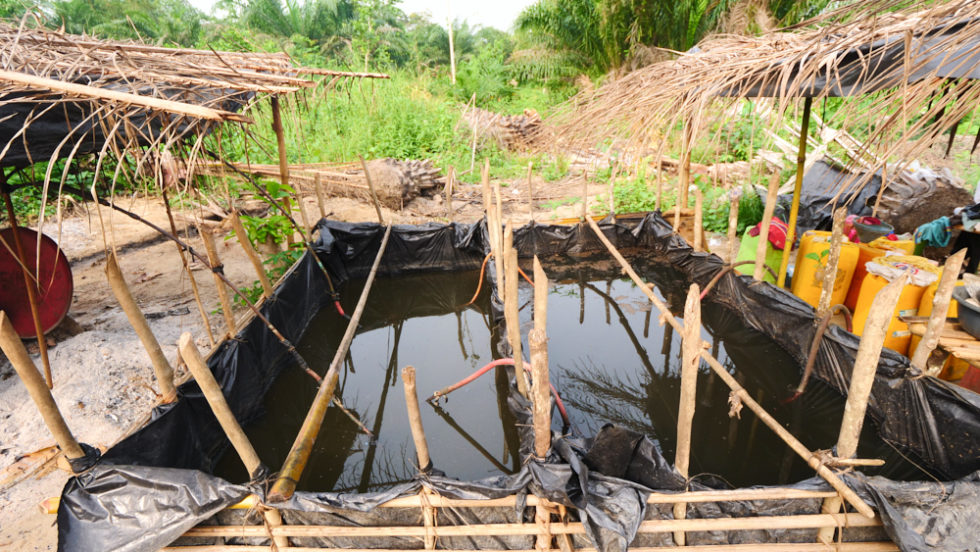
While exploring the farm, I learned that palm trees have six or seven byproducts, so the trees don’t go to waste after they’ve been drained of sap. Their leaves and branches are used in crafts, and the mealworms that live inside the tree are even eaten!
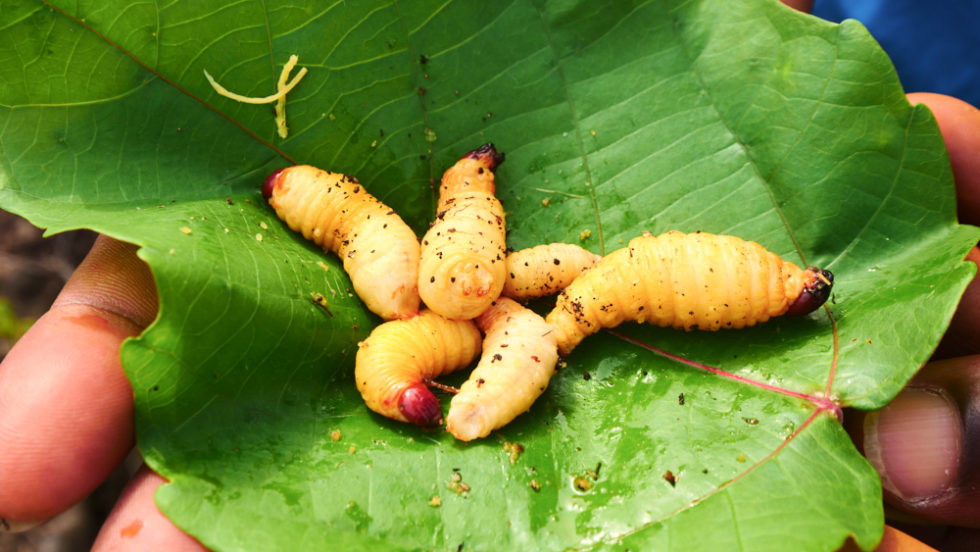
They skewer the mealworms and roast them over a fire, often with onion, tomatoes, and chilies. The roasted mealworms are small but have a nice, smoky flavor. It’s definitely a unique snack to try on your road trip. If you’re an adventurous eater like me, it’s one of the best things you can do on your way to Kumasi, Ghana!
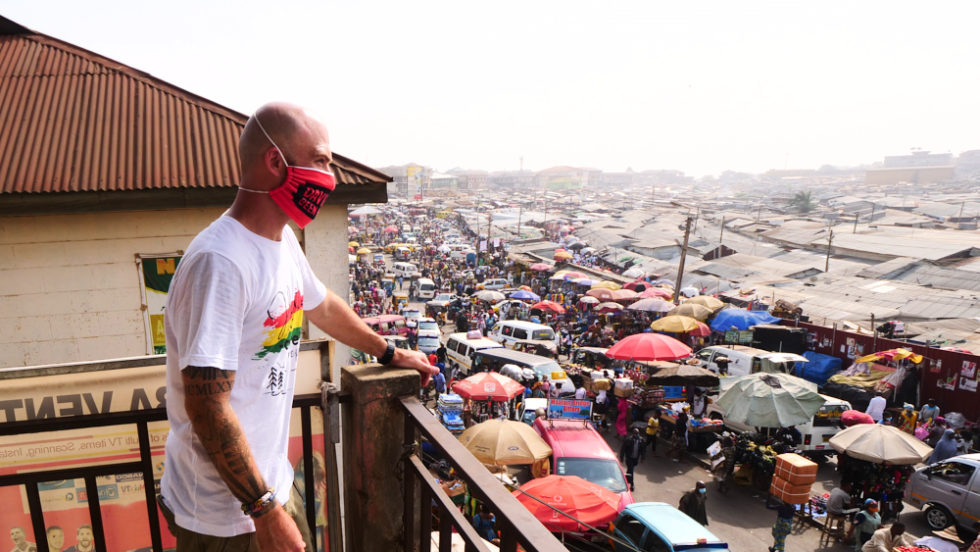
If you’re looking for a Ghanaian destination that offers a bit of everything, Kumasi is the city for you. Whether you’re looking to explore the past of the Ashanti Kingdom or want to dive into Ghanaian craft-making, Kumasi is a wonderful mix of culture of history and culture. When you add in the pulse-pounding energy of Kejetia Market and the wide variety of local foods to try, Kumasi really is a city made for travelers. It’s my favorite city I visited in Ghana and blew me away at every turn. Book a trip to Kumasi today to experience it for yourself!
NOTE: If you need to check the visa requirements of a particular country, click here. To apply for a visa, find up-to-date visa information for different countries, and calculate the cost of a particular visa, click here!
Counter
101 Countries • 1432 Cities